9. Drunken Master (Yuen Woo Ping, 1978, Hong Kong)
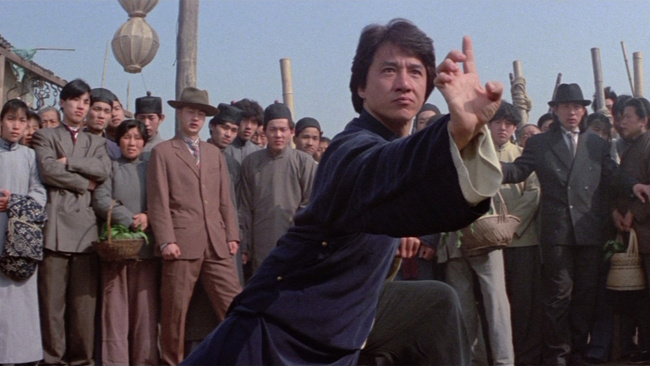
In “Drunken Master”, Jackie Chan presents all the distinct characteristics that made his movies so special. Fei Hung is the son of a famous kung fu teacher; nevertheless, he never stops getting into trouble due to his fighting, which constantly infuriates his father. When one of his incidents involves his aunt and cousin, his father decides to send him to train with Su Hua Chi, aka Beggar So, another common character of Cantonese martial folklore who was famous for his drunken style of kung fu.
The training is rigorous to a point of excruciating pain for Fei Hung, which leads to him escaping from the elderly man’s grasp. However, after a humiliating defeat from the notorious assassin Yim Tim Sam aka Thunderfoot, he decides to return to the beggar and continue his training in the secret style called “The Eight Drunken Immortals”.
Jackie Chan’s style is in its zenith here, with constant acrobatics, slapstick humor, and impressive action scenes.
Yuen Woo Ping, currently one of the most renowned action choreographers and coordinators, directed “Drunken Master” and also designed some of the most impressive action scenes of that time.
His father, Simon Yuen, plays Beggar So and Wong Chen Lee, who was famous in Hong Kong for his distinct kicking style, played Thunderfoot. Both scenes where he and Jackie Chan fight are utterly memorable.
10. Magnificent Butcher (Yuen Woo Ping, 1979, Hong Kong)
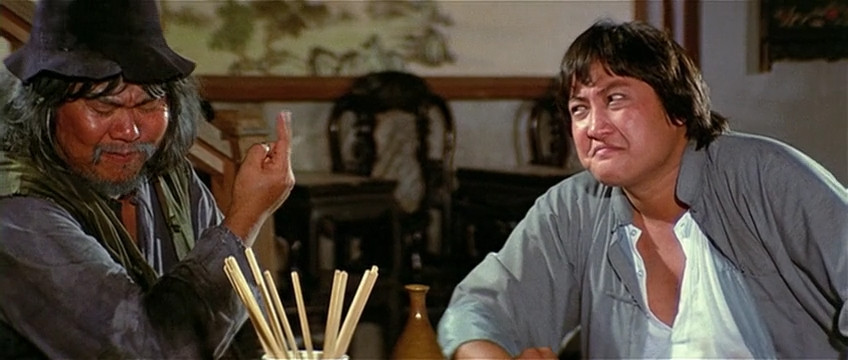
“Drunken Master” spawned a number of clone films and this particular one is among the best.
Butcher Wing is a mediocre student of Master Wong Fei Hung, a fact that has not prevented him from carrying a rivalry with another school headed by Master Ko. Eventually, Wing’s long lost brother arrives in town with his wife and Tai Ho, Master Ko’s son, abducts the girl.
Later on, the story involves Beggar So, a number of misunderstandings, murder, and a fight between Wing and Master Ko.
Sammo Hung is impressive in the titular role, at a time when his performance was much better than the one from Jackie Chan. Apart from that, the movie has the usual combination of martial arts and comedy, both benefiting the most from Sammo Hung’s presence (including his physique), and the intricate choreographies of Yuen Woo Ping.
11. The Prodigal Son (Sammo Hung, 1981, Hong Kong)
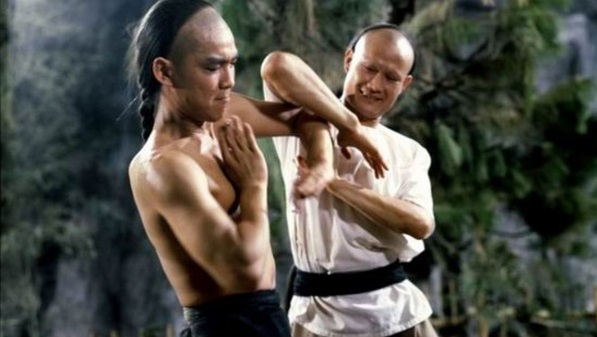
Considered one of the best traditional kung fu movies ever made, “The Prodigal Son” tells the story of historical Chinese Wing Chun practitioners, Leung Chang and Leung Yee Tai. The former is the privileged son of a wealthy entrepreneur in 19th century Foshan who studies kung fu, albeit unenthusiastically.
His lack of drive and his constant challenging of other fighters to duels have forced his father to pay those people to deliberately lose against him. Eventually, during a performance attended by Chang’s friends, a skirmish between them and a member of the troupe occur. The troupe member unveils himself as the renowned Wing Chun master Leung Yee Tai, before humiliating them in the ensuing fight.
Subsequently, Chang challenges him to a duel, but his father does not succeed in bribing him, thus resulting in his easy loss and the truth of what was really going on. The disillusioned Chang asks Tai to teach him Wing Chun.
Sammo Hung’s prowess in portraying Wing Chun found its apogee in this film, with quick and elaborately choreographed fight scenes that the actors execute to perfection without the use of wireworks or camera tricks.
Thus, the three protagonists (Yuen Biao, Lam Ching Ying and Sammo Hung) earned the Best Action Choreography award at the 1983 Hong Kong Film Awards.
Apart from the fighting scenes, the rest of the film is a farcical comedy in the style established by Jackie Chan and Golden Harvest, which includes preposterous characters, lots of clowning (particularly by Sammo Hung), and slapstick humor.
Furthermore, Hung entailed scenes of the Chinese opera (the choreographies of the time were based on its rhythm) and an extra-violent scene where a mass murder occurs.
12. The 8 Diagram Pole Fighter (Lau Kar Leung, 1984, Hong Kong)
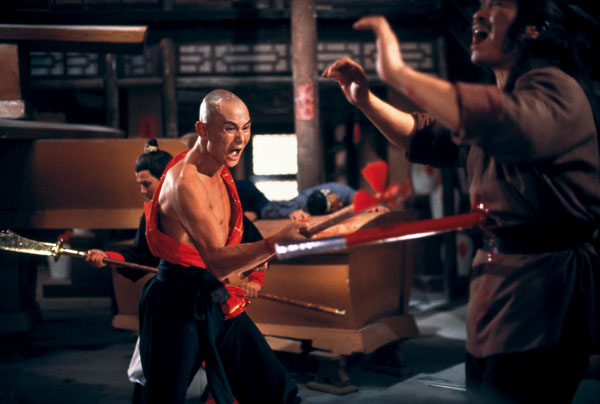
The Yang family is a group of seven brothers who, along with their father, frequently come to defend the ruling Sung Dynasty. However, the cunning general Pang Mai is jealous of the family’s status and plots against them with the Tartars, the most vicious enemies of the dynasty. Eventually, he manages to set them up as traitors and even tricks them into an ambush set by the Tartars, which ends with the family’s massacre and only the fifth and the sixth sons surviving.
The latter manages to return to his home to inform of the incident, but has become totally insane in the process. The fifth son eventually ends up in a monastery and, desperate for revenge, manages to persuade the abbot into teaching him his pole fighting technique. Subsequently, he embarks to exact revenge.
This film is probably the best of the many collaborations Lau Kar Leung had with the protagonist, Gordon Liu, who is an expert pole fighter. Leung’s effort to portray martial arts as accurately as possible reached its peak in this movie, with great training sequences and impressive pole fighting scenes. The final one, among a pyramid of coffins, is truly sublime.
Furthermore, the Zen undertone, the great performance by Alexander Fu (who plays the sixth brother who sinks into paranoia), and a number of “dark” episodes (like the one with the teeth bashing) give a depth to this film that transcends the boundaries of its genre.
13. Once Upon in China 2 (Tsui Hark, 1992, Hong Kong)
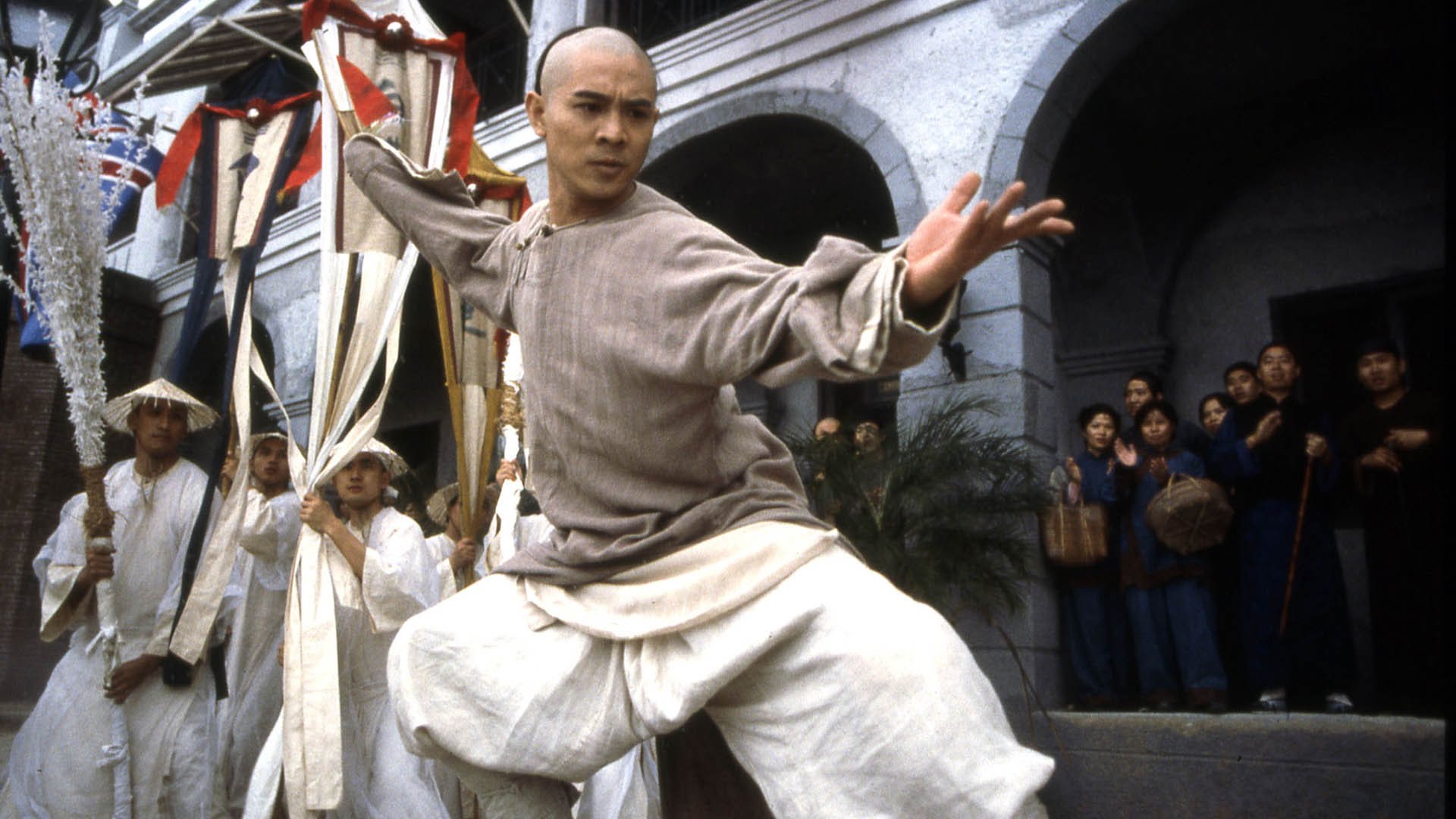
Chinese folk hero Wong Fei Hung, a chiropractor, doctor, and martial arts specialist, arrives in Canton for a medical seminary. However, he gets involved in a duel between a team of guerillas and palace authorities. Eventually, he meets the guerilla’s leaders and becomes friendly with them.
When they are arrested, he tries to free them, in an effort that results in a duel with military officer Nap Lan.
The best segment of the epic martial arts franchise brought together the crème de la crème of Hong Kong martial arts, with Tsui Hark directing, Yuen Woo Ping choreographing, and Jet Li and Donnie Yen performing in a plethora of spectacular action scenes, including the final one, which is considered to be the best in Jet Li’s filmography.
Furthermore, the entire franchise gave additional depth to the genre by including a number of social issues, particularly dispersion, the relationship between China and the rest of the world, and the policies of rehabilitation in order to cultivate national unity.
14. Fist of Legend (Gordon Chan, 1994, Hong Kong)
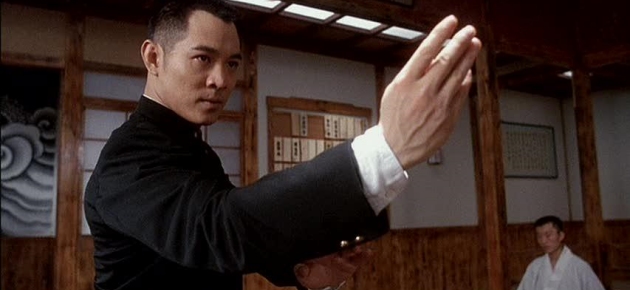
A remake of the aforementioned “Fist of Fury”, this film once again features Chen Zhen fighting Japanese martial artists, and it is considered one of the most impressive titles from both protagonist Jet Li and action choreographer Yuen Woo Ping.
This time, Chen Zhen studies in Japan when he is informed that Akutagawa, a Japanese fighter, has killed his former master in a duel. Heart-stricken by the news, he returns to Shanghai, and after he visits his master’s grave, he swears to avenge his death.
However, after his own bout with the Japanese, he eventually discovers that his master’s fight involved foul play. Eager to punish the Japanese who scheme against the Chinese martial artists, he proceeds to relentlessly fight hordes of them.
“Fist of Legend” is an archetype of the Hong Kong action genre. It includes the popular Chinese versus Japanese concept, and the direction, script and acting exist solely to lead into the action scenes.
As for the acting, Yuen Woo Ping took advantage of Jet Li’s martial arts abilities and created a number of incredible action scenes, with the added difficulty of having too many actors simultaneously on screen. Most notably, the extended battle between Chen Zhen and the Japanese sensei played by Yasuaki Kurata is one of the most elaborate in both of their careers.
Furthermore, Gordon Chan included themes of love, jealousy, and betrayal, creating a more serious film than the original, which included more comedic elements.
15. The Blade (Tsui Hark, 1995, Hong Kong)
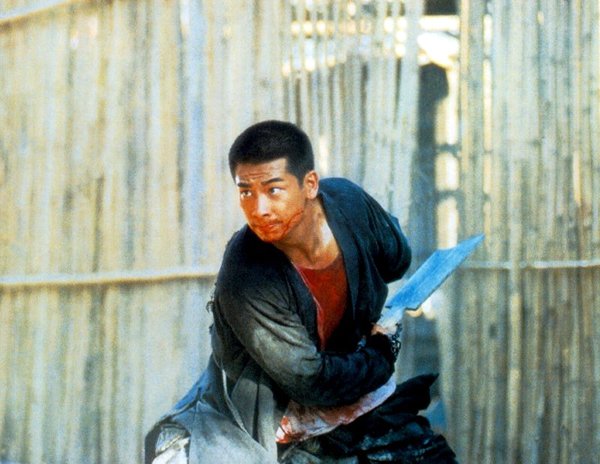
Tsui Hark’s remake of “The One Armed Swordsman” is a rapid and ultra violent film that celebrates Hark’s style.
On and Iron Head are two workers at the foundry of a master swordmaker. Ling, who also narrates, is the spoiled daughter of their boss, who sexually teases and taunts them both. Despite that, the lives of all the people in the foundry flow peacefully, despite the occasional skirmish.
However, when rogues start to cause trouble in the nearby village, their lives take a violent turn, while On discovers the murderer of his father and sets off to exact revenge. His quest, however, leaves him one-handed and eventually he renounces violence to live a quiet life. Unfortunately, he cannot escape his destiny.
Despite the usual incoherence in terms of script that actually appears in most of Hark’s works, this film amounts to a masterpiece of the genre due to its elaborate action scenes, impressive cinematography in the style of American Westerns, and the artful combination of a rapid pace and equally rapid music.
Lastly, the one-handed technique of the protagonist is one of the greatest samples of wirework ever to appear on film.
16. Crouching Tiger, Hidden Dragon (Ang Lee, 2000, Taiwan)
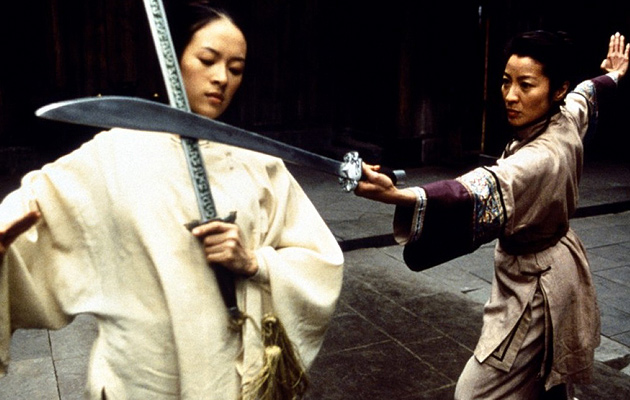
With 10 Oscar nominations that netted four golden statues, “Crouching Tiger, Hidden Dragon” is one of the most celebrated wuxia films of all time and the magnum opus of Ang Lee, who is probably the most beloved Asian filmmaker in the West.
In 18th century China, master warrior Li Mu Bai, who is secretly in love with Yu Shu Lien, the former fiancé of his deceased best friend and currently his associate, searches for a stolen sword named “Green Dragon”. His suspicions fall on an aristocrat’s daughter named Jen Yu, who in her desire to avoid her destiny has secretly trained in martial arts with the woman who assassinated Li Mu Bai’s teacher.
Lee managed to take a wuxia novel mostly concerning martial arts and transform it into a delirious, audiovisual poem, where each character fights for a different reason: love, honor, and recognition. However, love is eventually proven to be the strongest driving force.
In that fashion, Lee transcended the wuxia genre, creating a new category, with films like “Hero” and “House of Flying Daggers” following his example.
Furthermore, the film was technically flawless, incorporating a number of exquisitely choreographed fight scenes by Yuen Woo Ping that occurred in trees, on wires, and on city walls.
All three of the protagonists, Chow Yun Fat, Michelle Yeoh and Ziyi Zhang, perform exquisitely.
17. Hero (Zhang Yimou, 2002, China)

During the Warring States Period, China was divided into seven kingdoms. Among them, the most powerful was Qin, whose king’s purpose was to conquer the other six and become emperor. Because of this fact, a number of assassins threatened his life, chiefly among them Broken Sword and his loved one Flying Snow, and Long Sky with his assistant Moon.
Qin promised glory and honor to whoever managed to kill the aforementioned. Eventually, in front of him appears another assassin known as Nameless, who alleges that he had killed all of them and presents their weapons as proof. Subsequently, the king asks him to tell the story.
Through a number of flashbacks, Nameless explains what happened. But is he actually the one who killed the other assassins, or is his presence just an excuse to kill the king?
Inspired largely from “Crouching Tiger, Hidden Dragon”, “Hero” is another technically sublime film, with solid cinematography and costumes, and an overall incredible production value.
Furthermore, Zhang Yimou drew heavily from the chemistry between Tony Leung and Maggie Cheung to present a film with equal parts action and drama.
In that fashion, the action scenes may be far less violent that they usually are in this genre, but they compensate by being elaborate and artistically competent.